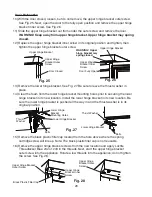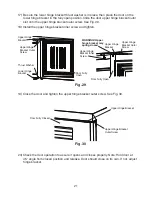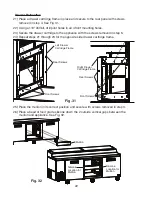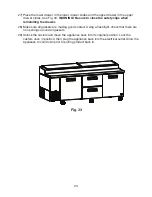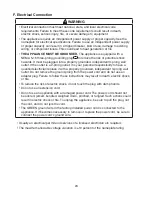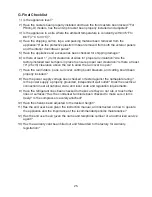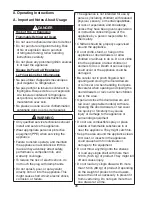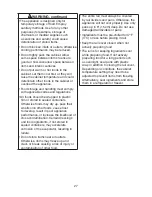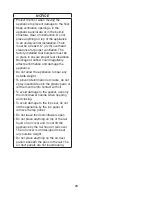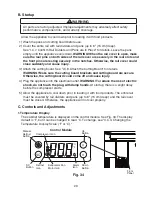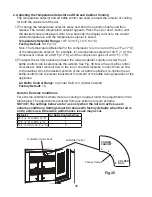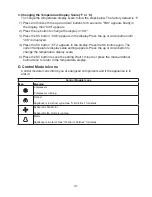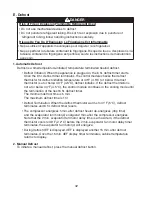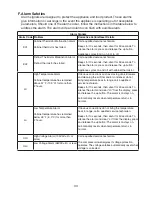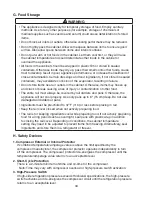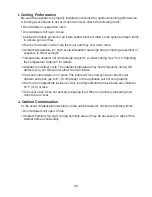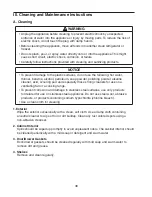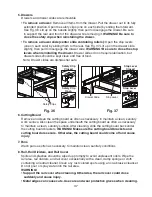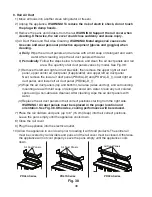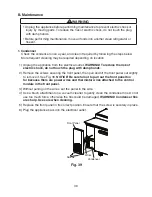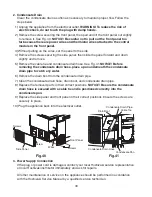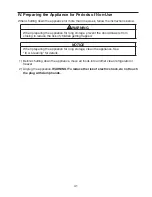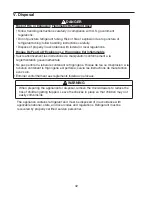
34
G. Food Storage
WARNING
• The appliance is designed only for temporary storage of food. Employ sanitary
methods. Use for any other purposes (for example, storage of chemicals or
medical supplies such as vaccine and serum) could cause deterioration of stored
items.
• Do not block air inlets or outlets, otherwise cooling performance may be reduced.
• Do not tightly pack the cabinet. Allow some space between items to ensure good
air flow. Also allow space between items and interior surfaces.
• Do not put warm or hot foods in the cabinet. Let them cool first, or they will raise
the cabinet temperature and could deteriorate other foods in the cabinet or
overload the appliance.
• All foods in the cabinet should be wrapped in plastic film or stored in sealed
containers. Otherwise foods may dry up, pass their smells onto other foods, cause
frost to develop, result in poor appliance performance, or increase the likelihood of
cross-contamination. Certain dressings and food ingredients, if not stored in sealed
containers, may accelerate corrosion of the evaporator, resulting in failure.
• Do not store items near air outlets in the cabinet. Otherwise, items may freeze up
and crack or break causing a risk of injury or contamination of other food.
• The entire rail must always be covered by rail dividers and pans. Otherwise, the
appliance will not cool properly. Use only pans up to 6" (15 cm) deep.
Do not use
damaged rail dividers or pans.
• Ingredients must be pre-chilled to 37°F (3°C) or less before placing in rail.
• Keep the rail cover closed when not actively preparing food.
• The rail is for keeping ingredients cool while preparing food. If not actively preparing
food for a long period such as overnight, seal pans with plastic wrap in addition
to closing the rail cover. Depending on conditions, the cabinet temperature
setting may need to be adjusted to prevent items from freezing. Alternatively, seal
ingredients and store them in a refrigerator or freezer.
H. Safety Devices
1. Compressor External or Internal Protector
If combined temperature/amperage value is above the limit specified by the
compressor manufacturer, the compressor protector operates independently to turn
off the compressor. The compressor protector de-energizes the compressor until the
temperature/amperage value returns to an acceptable level.
2. Short-Cycle Protection
There is a 2-minute minimum off-time and on-time for the compressor.
Note: Time may vary with compressor overload or high-pressure switch activation.
3. High-Pressure Switch
If high-side refrigeration pressure exceeds Hoshizaki specifications, the high-pressure
switch activates and de-energizes the compressor circuit until the refrigeration pressure
returns to an acceptable level.

